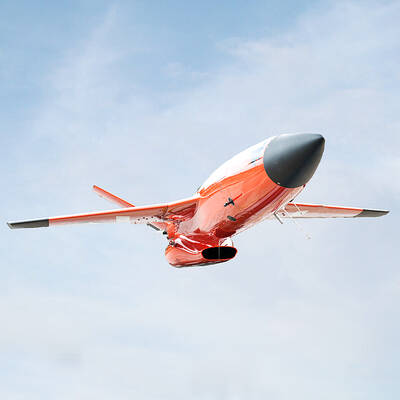Taiwan has signaled to US officials that it plans to move swiftly to complete a purchase of 66 new F-16 jets once US congressional foreign relations committees complete their review of the deal this month, a US Department of State official said.
The department on Aug. 20 formally notified the US Congress that it approved the sale, which includes munitions, defensive electronics and a top-of-the line fire-control radar that would allow precision-guided missiles and bombs to be launched from greater distances.
Once the deal is approved by Congress — and there has been no sign it will be blocked — Taiwan must submit a formal Letter of Offer and Acceptance that would be translated into a signed contract with delivery dates.
“According to our counterparts in Taiwan and the Taiwan representative’s office [in the US], they anticipate a quick move on their part” to finish the F-16 deal, US Assistant Secretary of State for Political-Military Affairs Rene Clarke Cooper said in an interview on Thursday after a breakfast meeting with reporters.
“If we are talking about the F-16s [alone] then the indicators are that’s a relatively quick turnaround from Taipei,” he said.
China has strongly objected to the sale of the jets built by Lockheed Martin.
Chinese Ministry of Foreign Affairs spokeswoman Hua Chunying (華春瑩) last month said that if US arms sales to Taiwan are not stopped “the Chinese side will surely make strong reactions, and the US will have to bear all the consequences.”
Congress has already approved a separate potential transaction for US$2 billion to sell Taiwan 108 M1A2 Abrams tanks, but no contracts have been announced for that deal.
“With every partner, we’re always looking at not only at their security requirements, we are looking at how they address it at home” in terms of budgets, Cooper said.
Negotiating a contract sometimes takes months and does not always result in a sale, but the Executive Yuan on Sept. 5 approved a special budget bill for the F-16 purchases, so the US approval process is in sync with Taiwan’s budget cycle.
“I strongly favor this sale going forward as quickly as possible,” US Senator Robert Menendez, the top Democrat on the US Senate Committee on Foreign Relations, said in an e-mail on Friday. “I remain concerned, however, that the administration created the appearance that our security commitment to Taiwan is up for negotiation with Beijing over US-China trade issues.”
The US, previously wary of antagonizing China, has not sold advanced fighter jets to Taiwan since then-US president George H.W. Bush announced the sale of 150 F-16s in 1992.
The administration of former US president Barack Obama rejected a similar Taiwanese request for new jets, but agreed to update its existing fleet.
Even if Taiwan moves quickly to complete the F-16 deal, there is a question as to how soon they could be delivered. Taiwan would be the fourth customer for the latest model of Lockheed’s iconic fighter, called the Block 70. They are being assembled at the contractor’s new facility in Greenville, South Carolina, which opened in April.
The first Block 70 jets are scheduled to roll off the Greenville line in late 2021, bound for Bahrain. Slovakia and Bulgaria are the other customers with orders.
It takes 36 to 39 months for the first aircraft to be delivered after a contract is signed, depending on customer requirements, Lockheed data showed.

CROSS-STRAIT COLLABORATION: The new KMT chairwoman expressed interest in meeting the Chinese president from the start, but she’ll have to pay to get in Beijing allegedly agreed to let Chinese Nationalist Party (KMT) Chairwoman Cheng Li-wun (鄭麗文) meet with Chinese President Xi Jinping (習近平) around the Lunar New Year holiday next year on three conditions, including that the KMT block Taiwan’s arms purchases, a source said yesterday. Cheng has expressed interest in meeting Xi since she won the KMT’s chairmanship election in October. A source, speaking on condition of anonymity, said a consensus on a meeting was allegedly reached after two KMT vice chairmen visited China’s Taiwan Affairs Office Director Song Tao (宋濤) in China last month. Beijing allegedly gave the KMT three conditions it had to

STAYING ALERT: China this week deployed its largest maritime show of force to date in the region, prompting concern in Taipei and Tokyo, which Beijing has brushed off Deterring conflict over Taiwan is a priority, the White House said in its National Security Strategy published yesterday, which also called on Japan and South Korea to increase their defense spending to help protect the first island chain. Taiwan is strategically positioned between Northeast and Southeast Asia, and provides direct access to the second island chain, with one-third of global shipping passing through the South China Sea, the report said. Given the implications for the US economy, along with Taiwan’s dominance in semiconductors, “deterring a conflict over Taiwan, ideally by preserving military overmatch, is a priority,” it said. However, the strategy also reiterated

‘BALANCE OF POWER’: Hegseth said that the US did not want to ‘strangle’ China, but to ensure that none of Washington’s allies would be vulnerable to military aggression Washington has no intention of changing the “status quo” in the Taiwan Strait, US Secretary of Defense Pete Hegseth said on Saturday, adding that one of the US military’s main priorities is to deter China “through strength, not through confrontation.” Speaking at the annual Reagan National Defense Forum in Simi Valley, California, Hegseth outlined the US Department of Defense’s priorities under US President Donald Trump. “First, defending the US homeland and our hemisphere. Second, deterring China through strength, not confrontation. Third, increased burden sharing for us, allies and partners. And fourth, supercharging the US defense industrial base,” he said. US-China relations under

The Chien Feng IV (勁蜂, Mighty Hornet) loitering munition is on track to enter flight tests next month in connection with potential adoption by Taiwanese and US armed forces, a government source said yesterday. The kamikaze drone, which boasts a range of 1,000km, debuted at the Taipei Aerospace and Defense Technology Exhibition in September, the official said on condition of anonymity. The Chungshan Institute of Science and Technology and US-based Kratos Defense jointly developed the platform by leveraging the engine and airframe of the latter’s MQM-178 Firejet target drone, they said. The uncrewed aerial vehicle is designed to utilize an artificial intelligence computer